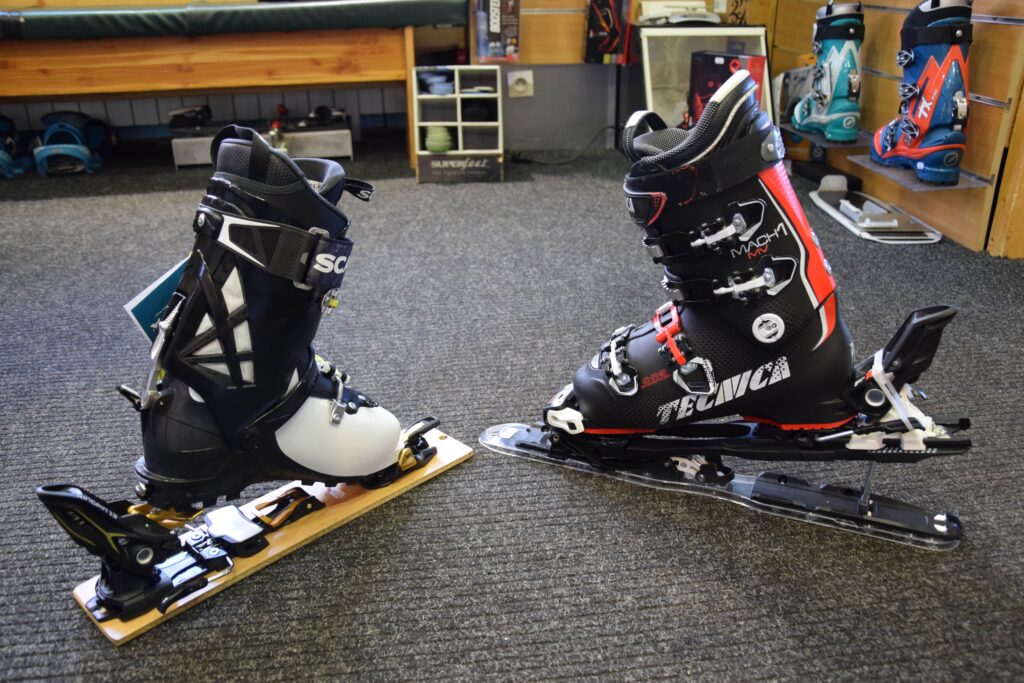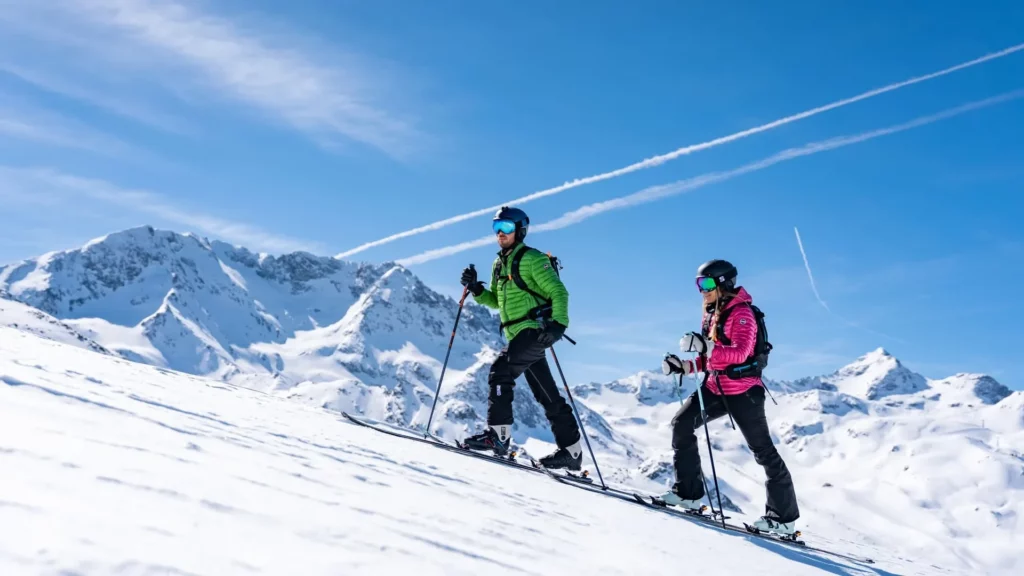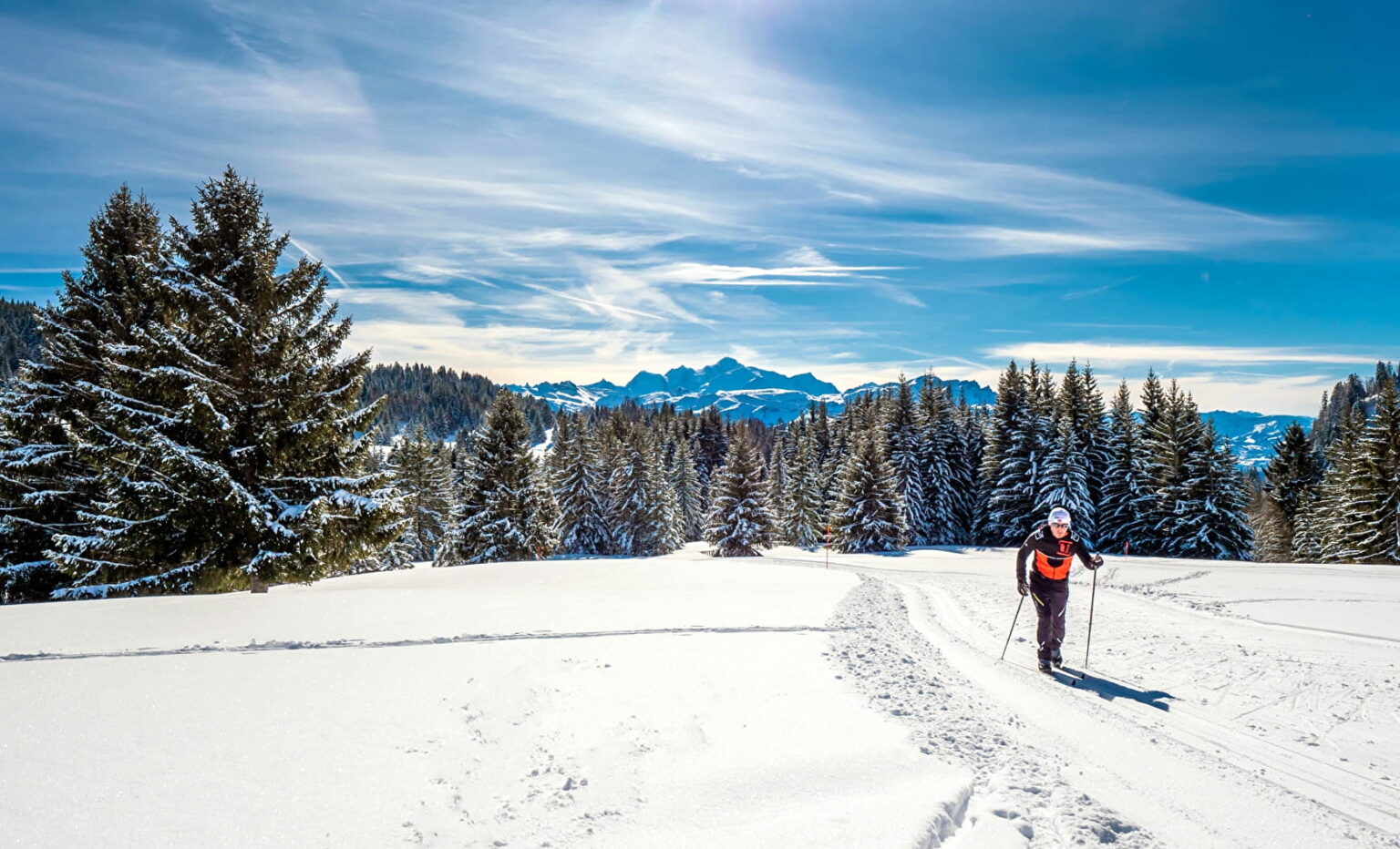Ski touring is attracting more and more mountain enthusiasts. Halfway between alpine skiing and mountaineering, this discipline allows you to get away from the crowds and explore immaculate landscapes. If you're tempted by the idea of climbing summits before enjoying powder runs, here's everything you need to know to get started safely.
Ski touring offers incomparable freedom. Unlike downhill skiing, you're not restricted to the marked runs. The ascent, equipped with sealskins under your skis, becomes an adventure in itself. You take the time to admire the surrounding nature, far from the hustle and bustle of the resorts. And once you've reached the top, the reward is twofold: a breathtaking view and a descent that's all your own.
But it does require a bit of preparation. Although more accessible than you might think, ski touring requires specific equipment and a few basic techniques. Before taking the plunge, it's a good idea to take an introductory course.
READ MORE: How do you choose your skis? Our guide to winter 2025
Many resorts and ski schools offer outings supervised by mountain guides. These professionals will teach you the basic techniques, such as how to put on your skins, how to make uphill conversions and safety rules.
One of the fundamental aspects of ski touring is risk management. Learning how to read the snowpack, use an avalanche transceiver and choose a route according to the conditions is essential if you want to ski safely. The guides will also help you to assess your physical and technical level so that you can choose suitable routes.
Essential equipment
If you're going to try ski touring, it's essential that you're properly equipped. Here are the essentials:

- Suitable skis Lighter than alpine skis, they are fitted with special bindings that free up the heel for climbing.
- Seal skins The skis are attached to the underside of the skis to prevent them from sliding backwards during ascent.
- Hiking shoes Comfortable for ascending, they offer a "walking" mode and sufficient support for descending.
- Safety equipment The trio of avalanche transceiver, shovel and probe is essential. In the event of an avalanche, these tools can save lives.
- Rucksack Choose a lightweight model with straps for attaching your skis.
The best places to start
For a first experience of ski touring, some resorts stand out for their safe and accessible itinerariesperfect for beginners.

- Les Menuires (Savoie) The Roc des 3 Marches: This resort in the 3 Vallées offers marked trails specially designed for beginners. The path up to the Roc des 3 Marches offers a gentle experience, with spectacular views at the summit.
- Serre Chevalier (Hautes-Alpes) The Chantemerle: With its two signposted itineraries, this resort is ideal for discovering the sport. The beginners' route from Chantemerle allows you to work on your conversion techniques in complete safety.
- Les Contamines-Montjoie (Haute-Savoie) The resort is well known for its unspoilt setting, with a signposted circuit through forests and clearings, perfect for novices looking for tranquillity.
- Saint-Gervais Mont-Blanc (Haute-Savoie) La Montée de Charme: Accessible and well-developed, the signposted "La Montée de Charme" route offers a gentle slope and a magnificent view of the Mont-Blanc massif.
- Les Arcs (Savoie) Arc 1600: With its many signposted courses, particularly around Arc 1600, this resort offers beginners the chance to learn in complete safety, while enjoying a magnificent alpine setting.

